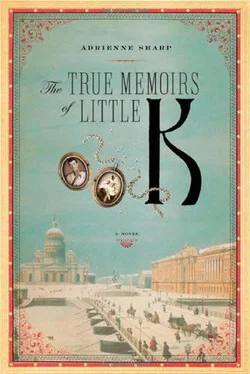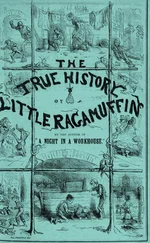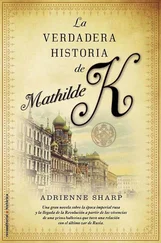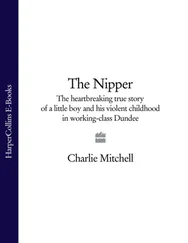Perhaps a word here about Petersburg, which those of us fortunate enough to live there called simply Peter . The city is a handful of islands divided by canals and rivers, all facing the Gulf of Finland. More than a dozen bridges join Peter’s disparate parts—Admiralty Island with its palaces and theaters, Hare Island with the Peter and Paul Fortress, Vasilevsky with the German Quarter and the stock exchange, Petersburg Island with its wooden houses and later its art nouveau mansions, the Vyborg side with its military barracks and later its factories. We were once, in 1611, simply a Swedish fortress— Nyenshants , which means Neva Redoubt —but it was Peter the Great in 1703 who decided to build on this spot a capital city. Here a new city shall be wrought. / Here we at Nature’s own behest / Shall break a window to the West . That’s Pushkin, from “The Bronze Horseman.” That, unlike the Lermontov, I read. Actually, Peter is a city neither Eastern nor Western, but both. It is European, like Paris, in its avenues, squares, parks, in its buildings of granite and marble, but unique in its long, low palaces reflected in the water, the rivers and canals that give the air its luminosity. When I dream of Peter I dream of light. Yes, the city is Western in design, but Eastern in its colors of brick red, mustard yellow, lime green, and cornflower blue, and Eastern, too, in the animals we kept like peasants in our courtyards by the great stacks of chopped wood—I myself, to have fresh milk, kept a cow at my mansion on Petersburg Island in 1907! And in the rooms, the private rooms, behind the granite classical façades, behind the pale, gilded salons, you will find the décor runs to patterned carpets, rich wall fabrics, the ubiquitous black or glazed tile Russian stove stoked from September to May, the polished silver or brass samovar full of scalding tea. We had no time to fully shed what was Eastern about us, for at Peter’s command the city was erected as swiftly as a stage set, within fifty years. Russians say Peter made his city in the sky and then lowered it to the ground, complete. But it was not Peter who made this city. Serfs and conscripts dug the foundations for it with their bare hands, carried off the dirt in their shirt fronts, hauled and stacked the marble, granite, slate, and sandstone. Two hundred thousand laborers died of exhaustion, of cold, and of disease transporting and erecting that stone, and we say the city is built on their bones, and on their bones is where the beau monde of Petersburg paraded each afternoon.
Yes, Petersburg started as a fortress and even in 1890 Petersburg was a military town; sixty thousand men were garrisoned there in vast barracks on Konnogvardeisky Boulevard behind the Horse Guards Ménage or at the western edge of the Champs de Mars or by the Winter Palace or the Alexander Nevsky Monastery or the Obvodny Canal or in the Vyborg District, and the city was colored by the greenish-gray uniforms of the Grenadiers, the white and silver of the Horse Guards, the crimson jackets of the Hussars, and the blue and gold of the Cossacks. These men and their officers were not in Peter just to train but also to play. The high social season began in January, sparked by the twelve balls given by the tsar at the Winter Palace. Court servants in green jackets and black feathered caps and soft leather gloves delivered thousands of cards stamped with gold double-headed eagles inviting the deliverees to the palace. Its great halls on those nights would be lit by ten thousand beeswax candles and garnished with pruned fruit trees in enormous pots and vases thick with pink roses, Parma violets, and white orchids sent north by train in heated cars from the warm Crimea, along with bowls full of fruit embossed with the tsar’s silhouette. Hundreds of troikas and carriages would clot the palace square, pulling close to the braziers, flames rising like red fountain spray to the black sky, their drivers carrying hot water bottles, sable blankets, and bottles of vodka—for even the blankets and braziers were not enough to keep these men warm. These balls went on until three o’clock in the morning, until the final polonaise. Too much vodka, though, while you waited for your master, and you felt overheated—if you tossed off your robe you might sleep your way to a frozen death. Although the square was shielded from the Gulf of Finland by the immensity of the palace itself, there are no words to explain the cold of a Petersburg winter. The lights from the palace lit up a white and black world—brittle ice and flakes and drifts of snow, the steaming black breath from the horses and the waiting men.
The season ended at Lent, after which society went to the country, to the islands outside Petersburg or to the Crimea at the Black Sea or to estates around Moscow, until the end of summer military maneuvers called them to the village of Krasnoye Selo near Peter, which boasted a great parade ground, around which the wooden villas of the officers lay like fringe. Ah, the lovely rhythm of those days. After maneuvers the court traveled to Europe, but by late August the ballet, the opera, the French theater had begun once again to adorn the stages, and their audiences eventually returned and began once again to adorn the blue velvet parterres and the loges to applaud the art we actors, dancers, musicians perfected just for them. During my time there were nineteen courts in Petersburg—the tsar’s, his mother’s, and seventeen grand ducal courts—several thousand people when one counted all the family members and courtiers; and these aristocrats along with the ambassadors and the Diplomatic Corps and the Guards and the occasional provincial nobleman came to the theaters every night during the season. You must remember we had no television, no radio, no cinema; Russian winter days are short, and there are many dark hours to fill. The Imperial Theaters produced plays, operas, operettas, concerts, and ballets, and of these performances at the Maryinsky, fifty were the ballet, and of those, forty performances were by subscription only. It fell to the director of the Imperial Theaters, Ivan Alexandrovich Vzevolozhsky, an aristocrat himself who could trace his lineage to Rurik and the princes of Smolensk, to supervise the production of all these amusements, and to Marius Petipa, the French dancer who had come to Petersburg in 1847 and clawed his way up to succeed St. Léon as ballet master of the Imperial Ballet, to create all the pas for them. He had help from the second ballet master, Lev Ivanov—who became a family friend and who loved my father’s meals, unfolding his linen napkin and saying, Let’s have a bite , but who never received the credit he deserved for his work, being a Russian in a Francophile court. M. Vzevolozhsky favored the Petersburg theaters over the Moscow ones, and why not? The court, after all, was here. At the Maryinsky one saw the same faces night after night. We were like family facing each other across the footlights, they very vocal relations, for the balletomanes would call out to us freely, Go, Mala , or More roles to Tata , to urge us to dance harder or to urge the directorate to reward exceptional talent. And, of course, there would be boos and hisses, as well. It was the court’s interest in the ballet that led eventually to the great Tchaikovsky’s composing for it and to the flowering of the art. Once I became famous, I delayed my return to the stage until later and later in the season, until the more prestigious months of December and January, as if I, too, were an aristocrat who had just returned from Europe to Peter. But that is ahead. At this moment I am still seventeen.
Alexander III on the day of my graduation had instructed me, Be the glory and the adornment of our ballet , and so I determined to be just that; and as I had chased first prize at my school, so I determined to chase the first prize outside of it: the tsarevich. I took so long with my toilette that April afternoon of my promenade I almost missed my chance to tag him. Now everyone has long, straight hair parted in the middle, a generation of girls who wear their hair like children in the nursery, but in 1890, we wore our hair tightly curled, wet it with sugar water and wrapped it around curling papers, spent hours pinning it to dry. I had a rivulet of bangs at the top of my forehead, tendrils fell before my ears, and that day I wore a ruffled blouse with a doubled length of brocade secured at the neck by a brooch, dabbed my violet scent behind my ears—for in 1890 each eau de cologne was made of just a single flower’s scent—and in this costume of a young lady, my school clothes packed away now, I walked the fashionable section of Nevsky Prospekt, where in the shops one could buy soft French gloves or Chinese tea or English soaps, past the site where Eliseyevsky’s would open in 1901, a shop so fancy it was hung with chandeliers and where one could buy the fruit and nuts of any region, to the Fontanka Canal, to the mustard-and-white façade of the Anichkov Palace where Niki’s family lived while in the capital, his father having eschewed the Winter Palace except for official receptions. The imperial family lived among us then—it was only later that Niki and his family secluded themselves so completely from Petersburg society that people forgot what they looked like. Right away I spied the tsarevich sitting on the balcony with his fifteen-year-old sister, Xenia, he smoking, of course, the two of them leaning forward in their chairs to look through the railings at the passersby. I slowed my pace, the better to be seen. Niki blew smoke from his mouth and nodded to me. I nodded back. He nodded at me again but he did not rise and approach the rails. What could I do but walk on?
Читать дальше












